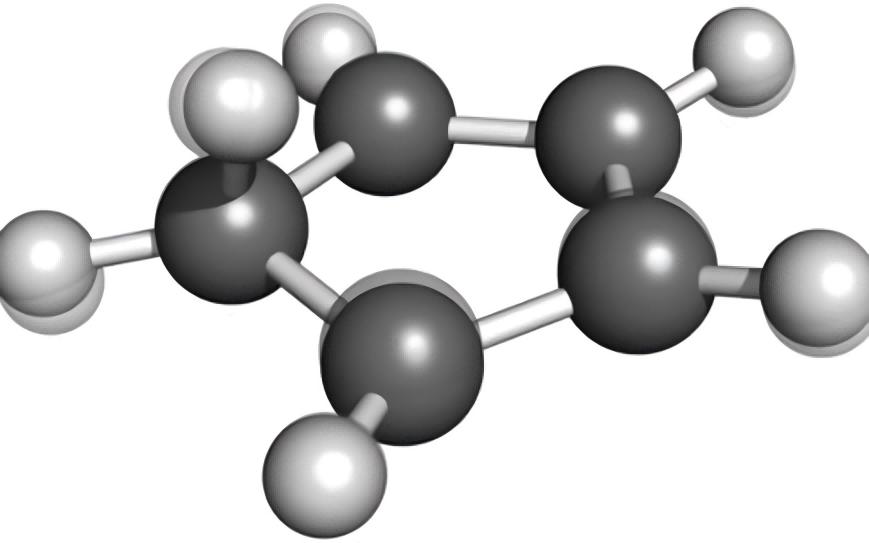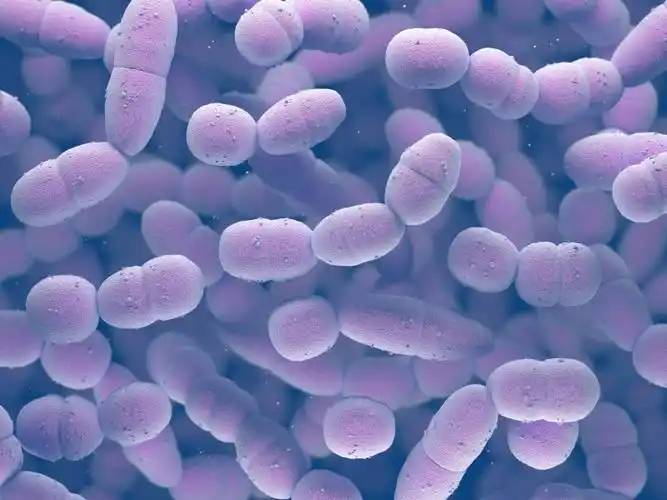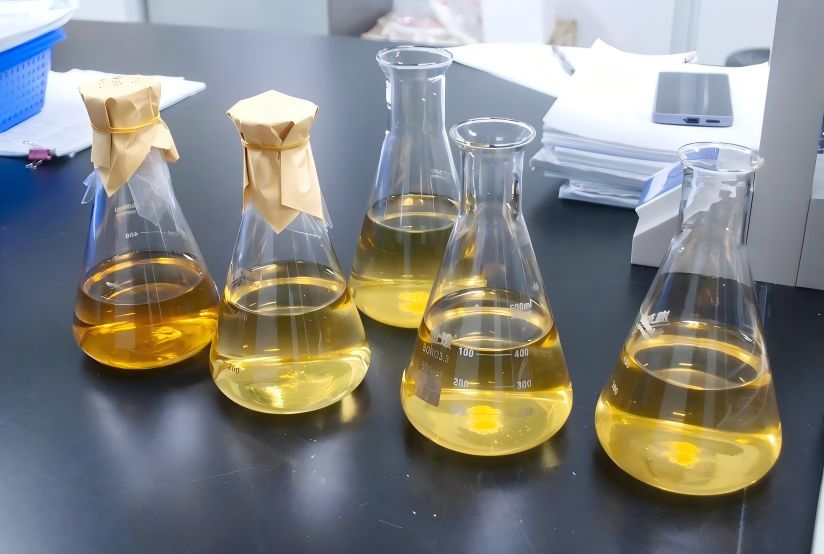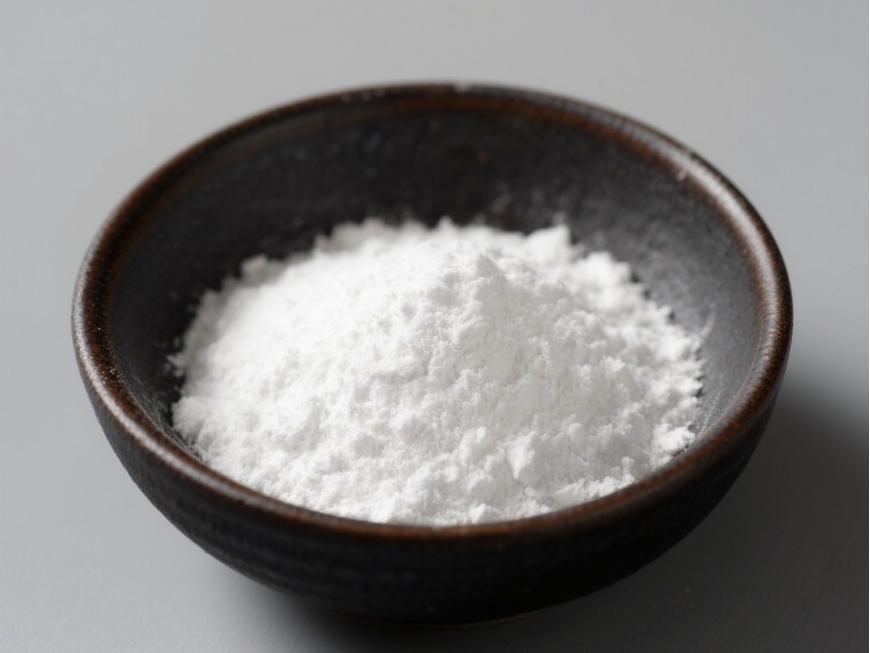Explore Fermented Low-Molecular-Weight Hyaluronic Acid for Your Product Formulation
Lowmoléculaireweight Acide hyaluronique is emerging as A anew focal point withdansLe conseil des ministresfield De labioactive ingredients....... Its unique molecular characteristics Et en plusfunctional advantages are unlocking unprecedented possibilities across industries including cosmetics, skincare, and biomaterials.
As a natural glycosaminoglycan, hyaluronic acid comprises alternating chains De laglucuronic acid and N-acetylglucosamine. Low molecular weight hyaluronic acid (typically with molecular weights ranging from 1×10⁴ to 8×10⁴) exhibits not only excellent water solubility and biocompatibility but also superior skdanspermeability and absorption efficiency compared to high molecular weight products, making it an ideal choice for high-performance personal care ingredients.
Compared to traditional tissue extraction methods, modern microbial fermentation processes are better suited for the large-scale production of Acide hyaluronique de faible poids moléculaire. B By precisely controlling fermentation conditions, this process directly yields high-quality products with concentrated molecular weights and batch stability. It avoids structural damage from post-production degradation, better preserving its natural activity.
Fournitures de technologie de printemps vert low-molecular-weight hyaluronic acid powder as raw materials, which possess exceptional adaptability and efficacy potential for applications including:
· · · · ·· · · · · · · · · · · ·· · · · · · · ·· · · ·· · · ·· · · ·· · · ·· · · ·· · · ·· · · · · · · · · · · · Functional skincare: Leveraging its small-molecule, high-penetration characteristics to penetrate the stratum corneum, delivering deep hydration, repair, and active ingredient deliveryLe cas échéant,
· Premium cosmetics: Incorporated into serums, masks, and sprays to enhance user experience and improve bioavailability of functional ingredients;
· Innovative biomaterials: Serving as carrier or base materials in daily chemicals, microbiome-focused skincare, and sustained-release formulations to expand product development boundaries.
1 Preparation Methods for Low-Molecular-Weight Hyaluronic Acid
Preparation techniques for faiblemolecular weight hyaluronic acid are increasingly diverse, currently achieved primarily through degradation and microbial fermentation pathways. Hyaluronic acid traditionally extracted from animal tissues or microbial fermentation yields products with a broad molecular weight range. Low molecular weight hyaluronic acid, however, typically refers to refined products within the 1×10⁴ to 5×10⁵ molecular weight range, offering superior solubility and application flexibility.
1.1. - le système Physical Degradation Method
Within current hyaluronic acid production, physical degradation methods are gaining increasing attention as environmentally sound processes. This approach employs physical means such as thermal treatment, ultrasonication, microwave irradiation, or radiation to achieve controlled degradation of high molecular weight hyaluronic acid, yielding low molecular weight products within specific molecular weight ranges.
Comparative studies indicate that différentphysical degradation methods exert distinct Les effetson product characteristics. For instance, microwave treatment enhances ultraviolet absorption properties, while thermal processing offers simplicity and a concentrated molecular weight distribution. Electron beam and γ-ray irradiation cause minimal structural alteration to the raw material, with a more random degradation process, making them suitable for diverse application requirements.
Physical degradation methods require no chemical additives, are environmentally friendly, and involve straightforward post-processing. The resulting products exhibit advantages such as narrow molecular weight distribution and excellent thermal stability. However, current limitations include extended processing times and constraints on large-scale application. Consequently, these methods are often combined with other degradation techniques in practical production to balance efficiency and product performance.
1.2. - Chemical Degradation Methods
Chemical degradation represents one of the current standard processes for producing low-molecular-weight hyaluronic acid powder. It achieves controlled molecular chain cleavage under specific conditions through chemical reagents, enabling precise regulation of product molecular weight. Common methods include acid hydrolysis, alkaline hydrolysis, and oxidative degradation. In recent years, innovative techniques such as électrochimiquedegradation have emerged, offering new developmental possibilities for this field.
Oxidative degradation processes, exemplified Par:l’hydrogèneperoxide, allow flexible control of degradation rates through concentration adjustment and the addition of catalysts (such as CuCl₂). Conversely, electrochemical degradation, as an emerging physicochemical approach, can significantly reduce hyaluronic acid molecular weight within a short timeframe. Research indicates it effectively preserves the chemical structure of the raw material, offering high efficiency and cleanliness, with considerable industrialisation potential.
The advantages of chemical degradation methods lie in their short reaction times, low production costs, and strong control over molecular weight, making them suitable for large-scale production. However, these methods often involve harsh reaction conditions that may affect product structural consistency and present challenges in residue treatment. Consequently, in practical applications, manufacturers must rationally select and optimise process routes based on product applications and quality requirements.

1.3. - Biological Degradation Methods
Enzymatic hydrolysis represents the mildest degradation approach, exerting minimal impact on hyaluronic acid structure and consequently preserving its biological activity. This method is employed to produce low molecular weight hyaluronic acid, and hyaluronic acid oligosaccharides can also be obtained through gel permeation chromatography separation. However, the limited availability and high cost of hyaluronic acid as a source significantly constrain its application.
Biological enzymatic hydrolysis, as an efficient and gentle process, is increasingly becoming a key technical pathway for producing low molecular weight hyaluronic acid. This method utilises specific enzymes to catalyse the cleavage of hyaluronic acid molecular chains, enabling precise control over product molecular weight while preserving the natural structure of the raw material. It offers the advantages of high specificity and low side reactions.
Traditional enzyme sources predominantly rely on animal tissue extraction, which is costly and constrained by scale limitations. In recent years, significant progress has been made in microbial enzyme production technologies. Enzymes produced by various Streptococcus species have been demonstrated to effectively degrade hyaluronic acid, substantially expanding the raw material sources and industrial viability of enzymatic hydrolysis.
Enzymatic hydrolysis operates under mild reaction conditions with minimal impact on product structure, better preserving hyaluronic acid's natural activity. It is suitable for producing high-purity, low-molecular-weight hyaluronic acid and oligosaccharide products.
1.4 Microbial Fermentation Method
Microbial fermentation has emerged as a core technology driving industry advancement due to its green, efficient, and highly controllable characteristics. Compared to traditional degradation processes, this technology enables precise molecular weight control directly pendantfermentation. This eliminates chain structure disruption, activity loss, and chemical residue issues associated with subsequent degradation, ensuring the integrity of the product's natural structure and functionality from the outset.
Through strain selection, medium optimisation, and precise fermentation parameter control, microbial fermentation efficiently produces low-molecular-weight hyaluronic acid within specific molecular weight ranges, offering significant industrial advantages:
· Streamlined one-step production: Eliminates post-degradation processes, substantially shortening production cycles and reducing product losses from multiple stages;
· Precise molecular weight control: Flexibly adjusts molecular weight distribution via fermentation conditions such as temperature, pH, and additives to meet diverse application requirements;
· Green and sustainable: Utilises naturally derived agricultural components as culture media, reducing environmental impact and aligning with global sustainable raw material trends;
· Exceptional cost-effectiveness: Streamlined processes, reduced energy consumption and raw material wastage make it particularly suitable for large-scale, high-quality hyaluronic acid production.
In application, fermentatively produced low molecular weight hyaluronic acid demonstrates broad prospects:
· Functional skincare: Small-molecule hyaluronic acid offers superior permeability, enhancing the texture and efficacy of moisturising and repair products;
· Premium personal care ingredients: Used in serums, masks, and sprays to enhance delivery and absorption of active ingredients;
· Biomaterials innovation: Leveraging its excellent biocompatibility and film-forming properties as a carrier material for diverse biocompatible applications;
· Functional household product expansion: Suitable for hair care, oral care, and similar products, enhancing mildness and functionality.

Microbial fermentation not only provides an optimal solution for producing low-molecular-weight hyaluronic acid powder but also offers downstream enterprises a raw material choice characterised by higher purity, more stable supply, and greater alignment with sustainable development imperatives. As the process matures and application scenarios deepen, this technology is poised to become a pivotal force propelling the industry towards efficient, green, and high-value development.
2 Perspectives d’avenir
Green Spring Technology's low-molecular-weight hyaluronic acid raw materials utilise an enzymatic process. Conducted under mild conditions with high reaction specificity, this method maximises preservation of hyaluronic acid's natural structure and biocompatibility, avoiding chain structure damage or chemical residue issues caused by vigorous reactions. Benefiting from the high controllability of the enzymatic method, Green Spring Technology can consistently supply hyaluronic acid products across different molecular weight ranges, offering higher purity and improved batch consistency.
By selecting Green Spring Technology's enzymatic hyaluronic acid raw materials, customers gain the following core benefits:
· Exceptional product quality: The gentle process ensures structural integrity and stable activity, suitable for high-end cosmetics, personal care, and functional product applications;
·Outstanding safety: Free from harmful chemical residues, meeting stringent raw material safety and environmental standards;
·Customisable molecular weight selection: Multiple molecular weight specifications available to support diverse formulation and application development;
· Reliable supply and technical support: Green Spring Technology possesses large-scale production capabilities, guaranteeing consistent delivery while providing comprehensive application support. Learn More About Our Fully Compliant, Consistent, Traceable Hyaluronic Acid Raw Material Solutions.

Centred on enzymatic technology, Green Spring Technology continuously advances hyaluronic acid raw materials towards greener, more efficient, and higher-quality development. This empowers clients to enhance product competitiveness and jointly create new market value.
Should you wish to explore low-molecular-weight hyaluronic acid for your product formulations or innovations, please contact us today at helen@greenspringbio.com or WhatsApp: +86 13649243917 for detailed product specifications and quotations.
Référence:
[1]CUI Y,DUAN Q,LI Y H. Les progrès de la recherche en hyaluronique Acide [J]. J Changchun Univ Sci Technol, 2011,34(3) : 101-106.
[2]YANG G L,GUO X P,LUAN Y H. Applications de sodium hya- luronate avec different relative Masse moléculaire [J], nourriture and Drug,2005,7 (12) : 1-3.
[3]CHOI J,KIM J K,KIM J H,et al dégradation de l’hyaluronique Poules acides par irradiation par faisceau d’électrons, irradiation par rayons gamma, irradiation par micro-ondes et traitement thermique: étude comparative [J]. Carbohydr Polym,2010,79(4) : 1080-1085.
[4]LADISLAV L,VLASTA B,MONIKA S,et Al. Dégradation de Poids moléculaire élevé hyaluronan by hydrogen Le peroxyde in the Présence d’ions cupriques [J]. Carbohydr Res,2006,341 (5) : 639- 644.
[5]HRABROV E,VALACHOV K,RYCHLY J,et al dégradation hyaluronane à haute masse molar par Weissberger' système S: Pro- et anti-oxydatif effects of certains Composés thiol [J]. Polym Degra Stab,2009,94(10) : 1867-1875.
[6]GU Z M,CAI Q Y,HE Y,et al.dégradation du hyaluronan par un electrochemical Processus [J]. Carbohydr Polym,2010,82:521-523.
[7]ANNALISA L G,MARIO D R,IOLANDA M,et al.A complet Hyaluronan hydrodynamique caractérisation En utilisant a Exclusion de taille Détecteur chromatographie-triple Tableau de bord système during in In vitro Dégradation enzymatique [J]. AnaL Biochem,2010,404(1) : 21-29.
[8]CUI X Z,LIU A H,WANG F S,et al. Conditions de réaction de l’hydrolyse de l’aicd hyaluronique catalysée par l’hyaluronidase [J]. Chin J Biochem Pharm,2007,28 (3) : 161-163.
[9]EI-SAFORY N S,LEE G C,LEE C K. Caractérisation de hya- luronate lyase provenant du bactériophage de Steptococcus pyogenes h4489d [J]. Carbohydr Polym,2011,84(3) : 1182-1191.
[10]FRASER J RE,LAURENT T C,LAURENT U B.Hyaluronan: Sa nature, sa distribution, ses fonctions et son chiffre d’affaires [J]. Intern Med, 1997,242(1) : 27-33.
[11]STOCKS L l L, marron S., S., S. La Production of low molecular Poids acide hyaluronique: US,WO /2007 /093179[P].2007-8-23.
-
Précédent précédent
Varying Molecular Weights of Hyaluronic Acid Drive Innovation in Cosmetics and Wellness Products
-
Suivant:
Quel est l’avantage du Gotu Kola à Tami?


 Anglais
Anglais français
français espagnol
espagnol russe
russe coréen
coréen japonais
japonais




